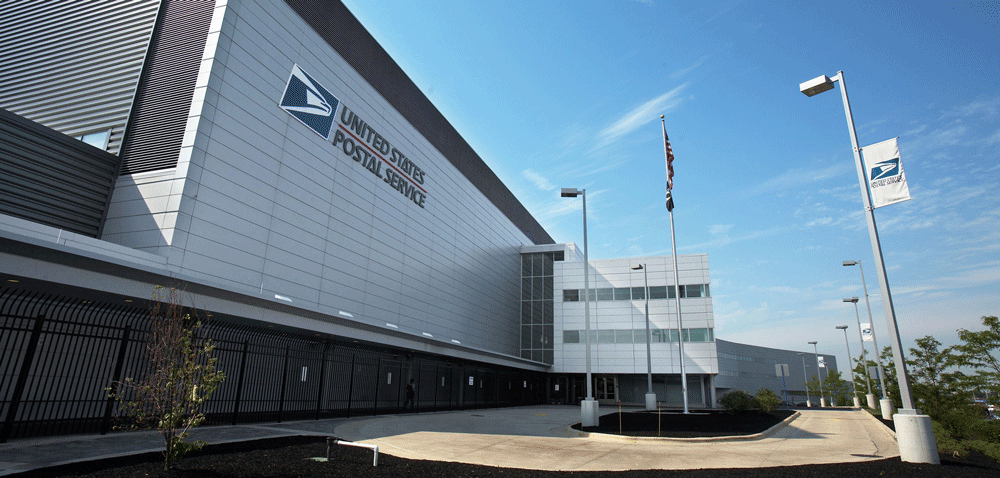The USPS needs to innovate in the last mile. It could be best-in-class, by leveraging its current network and adding lockers and new delivery solutions. Analysis from Ian Kerr (Postal Hub Podcast) and Marek Różycki (Last Mile Experts).
The US Postal Service is under pressure in parcel delivery. FedEx is starting to pull volumes out of the Parcel Select service (where the USPS does the last mile for other carriers such as FedEx and Amazon), and Amazon is pushing more of its parcels to its own delivery service partners.
Like many postal operators around the world facing falling letter volumes, the USPS is looking to grow its parcel business. But if FedEx, Amazon and others stop using USPS services for urban areas, the USPS will be left with less profitable deliveries.
This is the ‘carrier of last resort’ problem – and the USPS isn’t alone. Commercial carriers often don’t deliver to rural or remote areas, and those that do impose a surcharge. Postal operators, with their universal service obligation compelling them to deliver letters to all corners of the nation, also step in to make sure customers in rural and remote areas receive parcel deliveries as well.
So how can the USPS compete with its commercial competitors? Let’s consider some of the options already on the table.
Parcel lockers and PUDOs
The USPS has a dense network of some 31,000 retail points and a limited network of lockers – called gopost – but the locker network isn’t dense enough or sufficiently widespread to make an impact and is not fully integrated with access points to create a market leading out of home alternative.
In September, the USPS issued a Request for Information for parcel lockers. Could this signal a serious return to parcel lockers by the USPS? Here are three things the USPS can do to make them work:
• Better leverage the existing post office network to create a first-class PUDO (pickup, drop-off) network.
• Build an integrated PUDO and locker network at scale – before its competitors (that is, Amazon) beats it to the punch.
• Open the network to other carriers to generate more volume (and revenue, of course) as well as support better utilization for lockers
Meanwhile, Amazon is pressing forward with its parcel locker network in the USA.
Drones
The USPS has also issued an RFI for drones capable of delivering the mail. This is not a serious solution. Drones are appropriate for specific use cases, such as delivering to hard-to-reach zones, but it is hard to see how delivering mail via drone will help the USPS compete in the last mile.
The USPS has been trialling autonomous trucks for long-haul operations, but large-scale implementation is still far off. As for autonomous ground vehicles (delivery robots, or AGVs) in the last mile, they may yet have a role for same-day delivery or helping add capacity in some delivery areas.
Informed Delivery
Informed Delivery is an online service that allows customers to preview their mail and manage packages scheduled to be delivered.
It has many interactive delivery management (IDM) features, allowing customers to reschedule delivery, leave delivery instructions for the driver, track parcels, and manage delivery notifications.
“Informed Delivery is one of the most successful innovations from the USPS in the last five years,” said Mark Fallon, president and CEO of the Berkshire Company. “It currently has over 19 million subscribers, representing a 12% saturation rate of all delivery points. The goal over the next 12 months is to more than double that – 40 million subscribers, or 30% of eligible delivery points.”
Now the USPS is adding an electronic signature service to Informed Delivery that removes the need for Informed Delivery customers to physically sign for deliveries requiring a signature.
The USPS carrier will be able to deliver the typical package on the first attempt to the delivery address without having to arrange for redeliveries.
“Adding electronic signatures is just one of several improvements to the Informed Delivery platform shippers can expect,” added Fallon. “In addition to the current promotion for creating Informed Delivery campaigns, the USPS is re-engineering the platform to enhance the sign-up options and new campaigns around packages.”
Staying competitive?
While the USPS is beset by many problems, including problems created by politicians, it has the potential to build an even better last-mile parcel delivery network.
Amazon isn’t sitting around waiting for its delivery partners to improve. Rather, it’s spotting gaps in the market or areas that need improvement and building its own best-in-class delivery solutions.
The USPS cannot sit on its hands. It must enhance its existing delivery network, continue to build up Informed Delivery into a fully fledged IDM tool capable of rivaling Amazon, and create new customer-centric parcel delivery options.
If it couples IDM with a dense and open PUDO/locker network, driving significantly better first-time delivery rates compared with residential ‘to door’ delivery, as well as better stop efficiency, we see a brighter future for the US national carrier. Let’s see if USPS has the vision and drive to make this happen.
 Ian Kerr is the founder and host of the Postal Hub Podcast, the weekly podcast for the postal and delivery sectors.
Ian Kerr is the founder and host of the Postal Hub Podcast, the weekly podcast for the postal and delivery sectors.

Marek Różycki is managing partner at Last Mile Experts, specializing in CEP and e-commerce last-mile advisory.



